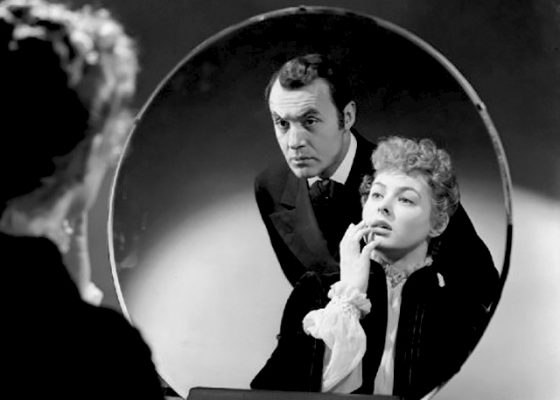Despite its varied forms or narratives, all Gothic fictions revolve on a fundamental contrast: that between the tenuous comfort of an isolated self and the dangerous fascination of an intrusive otherness. The Victorian is an age characterised by its obsession with the supernatural – poised on the verge of modernity, with scientific advancements like Charles Darwin’s Origin of Species inspired missions to unlock the myths of the natural world, people began to take notice of what lay outside their limited knowledge of things, of anything that is external to the closed domain of humanity. This curiosity for the unknown provoked an appraisal for the known – the immutable social system was revealed as hostile to the cultivation of individual minds, and time-honoured ethics such as that dictating a woman’s role in a traditional domesticity a menace to the preservation of personal integrity.
The negotiation between the old and the new, the internal and the external, is the dominant theme of Victorian literature. Freedom was a concept that had no longer a purely theoretical abstractness; its pent-up force sought outlet finally in the practical efforts of the few, exerting far-reaching impacts that would, in consequence, changed face of the social climate. Even for those to whom the prospect of freedom was not too implausible a dream, but altogether an unattainable privilege, their growing distrust with the old values and ideals that they used to hold dearly to triggered stirrings of rebelliousness against their secluded lives.
A typical Gothic fiction dramatises this struggle of attaining the freedom of self. Women are chiefly the voice, their stories a model for the oppressed to stand up against the injustice of their present conditions, or the tyranny that condemns their lives to endless fear and suffering. Passivity is no longer a mark of feminine virtue, but an impediment to one’s pursuit of future happiness and self-fulfillment. Instead of resigning to fruitless dreaming, those doughty women set out to rewrite their destiny.
But not all women in those stories start in a place where their sense of resoluteness or intrepidity is readily evoked in the face of adversity, nor are they wholly aware of possessing those qualities. Patrick Hamilton’s Gaslight features a heroine who is constantly questioning her own sanity. It is clear from the outset that her husband isn’t totally innocent in the matter: he reproaches her for her incessant forgetfulness and, later, a paranoiac hallucination which convinces her that the gaslight would inexplicably dim whenever he is out. The unravelling of the mystery seems too facile, with every obvious clue pointing to the husband as the cause of the wife’s affliction. He is callous and scornful during his wife’s many mental break-downs, flirting behind her back with the servant and slipping out every night to tend to an unknown personal business.
Intentionally or not, the play’s want of suspenseful elements heightens this uneasy complicity between the playwright and the audience, to the extent that, as the heroine’s suffering of her husband’s cruel treatment becomes increasingly acute, our collective moral conscience is called into question. This manipulation of audience’s response constitutes in the main the mechanism of filmmaking. A filmmaker is, in a sense, more of an interpreter than a storyteller, whose invisible presence thrusts more forcefully between an audience and the film. It seems normally the case that, when viewing a film, especially for the first time, one is allowed not much freedom in diverting from the fundamental perspective through which the story is told.
With George Cukor’s 1944 film adaptation of Gaslight the viewers are subjected to an emotional trial that sees Ingrid Bergman’s Paula Alquit systematically driven mad by her wicked husband Gregory, played by Charles Boyer. Both were acting against their types: Bergman reduced to a crumbling frailty that was oddly efficacious with someone whose tall, robust frame, and whose faultlessly dignified mien, earned her roles in the past of a more fearless, dogged temperament (in fact it was Cukor’s intention that the character should seem in appearance contrary to the tortured victim she then becomes); whilst Boyer swiveled between his signature lover’s charm and a shuddering viciousness.
What ultimately distinguishes Gaslight from other Gothic thrillers of the period is the timelessness of its subject - that our greatest fear derives not from the threat of what we don’t know, but the unsuspected danger inherent in what we know. Gaslight is a perfect metaphor for this: it consists in both light and darkness, offering at most temporary, tentative relief that is constantly accompanied by signs of its imminent extinction.

Comments
Post a Comment